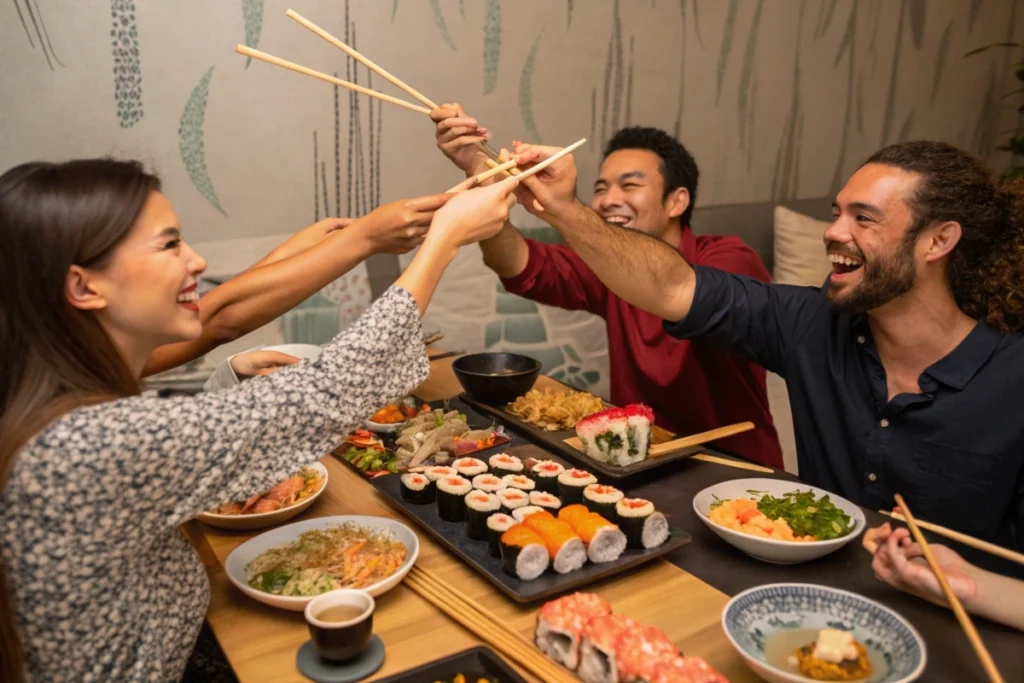Introduction
Are you craving the rich flavors and delicate presentation of japanese food near me? Japanese cuisine has become an international sensation, beloved for its emphasis on fresh ingredients, subtle yet bold tastes, and artistic plating. Whether it’s perfectly sliced sashimi, aromatic ramen, or crispy tempura, there’s always a dish to satisfy your palate. Finding the best japanese food near me can sometimes be a challenge, especially if you’re new to the cuisine or live in an area with limited options. However, with a few savvy tips, you can easily locate hidden gems that deliver authentic japanese food near me menu and cater to your specific cravings—be it sushi, bento boxes, or comforting bowls of miso soup.
In this comprehensive guide, we’ll explore everything from understanding the nuances of Japanese dishes to picking the perfect restaurant, whether it’s a cozy izakaya or a modern fusion eatery. We’ll also discuss how to access japanese food near me delivery and takeout, so you can indulge in your favorite delicacies at home. By the end, you’ll be well-equipped to venture out and savor unique flavors at places that are open now, or even order online with confidence.
Explore easy Japanese meals to expand your culinary adventure.
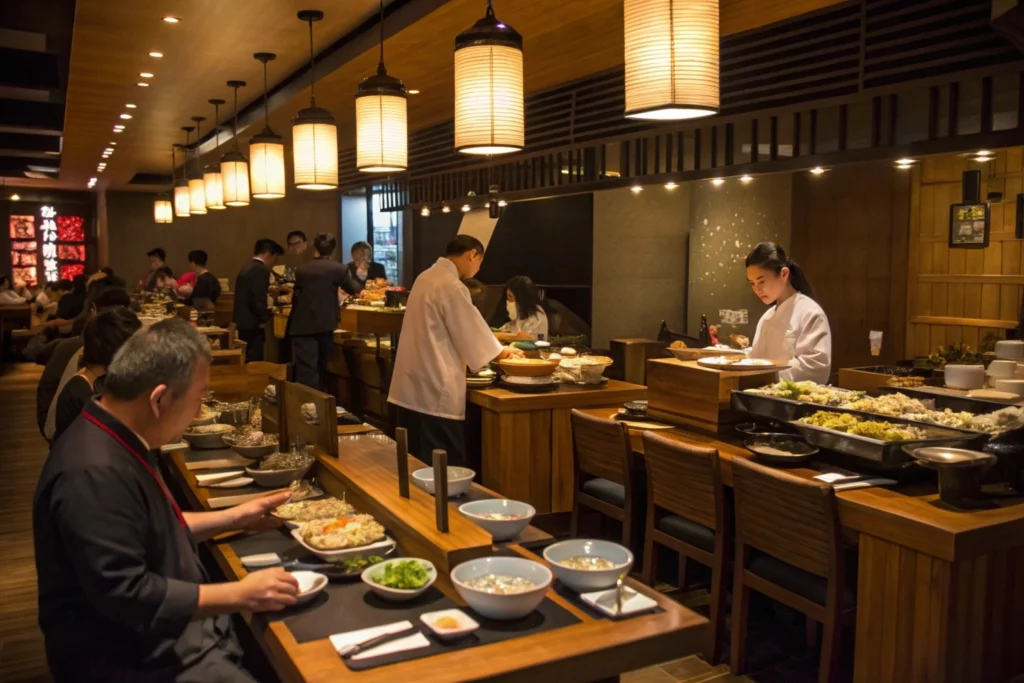
Main Sections
1. Understanding Japanese Cuisine
Japanese cuisine is a tapestry of flavors, techniques, and centuries-old traditions. The core principle revolves around highlighting the natural flavors of fresh ingredients, whether it’s seafood, vegetables, or premium cuts of meat. One significant characteristic of authentic japanese food near me is the practice of umami, the fifth taste alongside sweet, sour, salty, and bitter. Dashi (a broth made from kombu seaweed and bonito flakes) infuses dishes such as miso soup and ramen with a distinct savory essence that diners worldwide have grown to love.
In Japanese cooking, minimal seasoning often allows each element to shine. Rice, noodles, and vegetables are commonly used as a base, while proteins like fish, chicken, pork, or tofu provide depth and versatility. Sushi offers a prime example of this delicate balance: perfectly seasoned rice combined with the freshest catch of the day, be it salmon, tuna, or shrimp.
Of course, there’s more to Japanese cuisine than just sushi. Donburi (rice bowls topped with savory ingredients), ramen (rich broth-based noodle soups), and tempura (crispy battered vegetables or seafood) all highlight the creativity and variety found in Japan’s culinary heritage. If you’re looking for the best japanese food near me, start by exploring restaurants that emphasize authenticity—using traditional cooking methods and locally sourced, high-quality ingredients.
In recent years, many eateries have introduced modern or fusion twists, blending Japanese techniques with Western or other Asian influences. These variations can be exciting for the adventurous foodie. However, if you prefer a classic experience, focus on places that specialize in time-honored meals, such as omakase sushi bars or traditional izakayas serving yakitori (grilled chicken skewers) and sake.
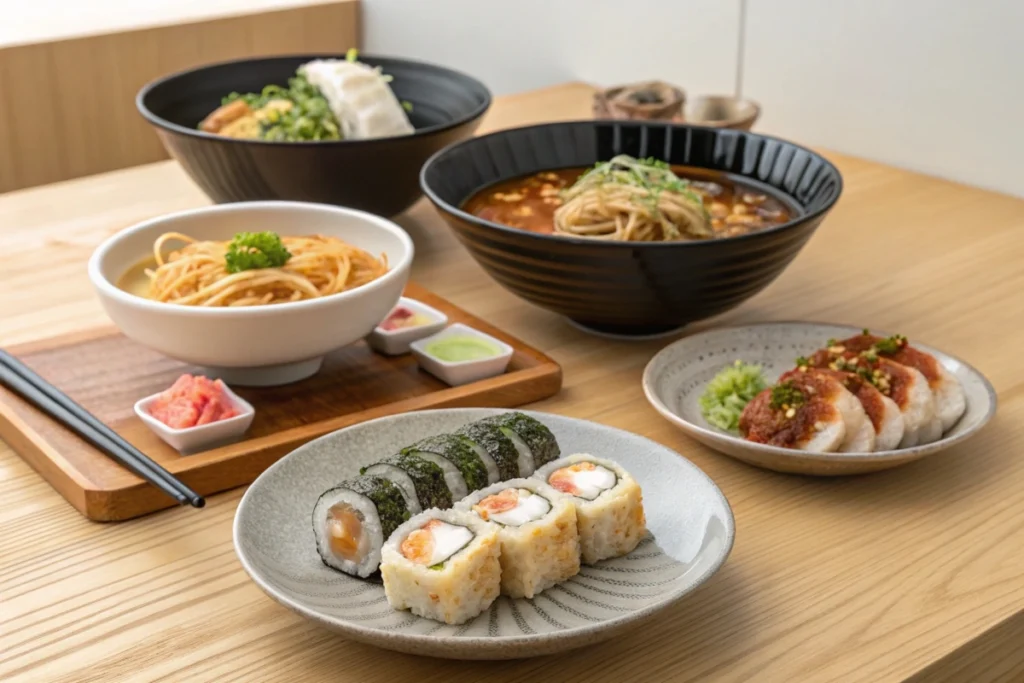
2. Popular Dishes to Try
When it comes to japanese food near me, you’ll encounter a stunning array of dishes, each offering something uniquely memorable. Here are a few must-try options:
- Sushi and Sashimi: From classic nigiri to elaborate maki rolls, sushi is a global favorite. For the purest taste, sashimi—fresh slices of raw fish served with soy sauce and wasabi—is an exceptional choice.
- Ramen: A hearty noodle soup that can feature pork (tonkotsu), soy sauce (shoyu), miso, or salt (shio) as the base. Expect savory toppings like braised pork, bamboo shoots, and soft-boiled eggs.
- Tempura: Lightly battered and deep-fried seafood or vegetables. Shrimp tempura is especially popular, but you’ll also find seasonal veggies like kabocha squash and eggplant.
- Okonomiyaki: Often called “Japanese savory pancakes,” okonomiyaki includes a mixture of cabbage, batter, and your choice of toppings like pork belly, seafood, or cheese. It’s then drizzled with sweet-savory sauce and Japanese mayonnaise.
- Onigiri (Rice Balls): Simple yet delightful. Fillings can range from pickled plum to salmon or tuna, making them a convenient snack or light meal.
If you’re planning to explore local spots, you may come across menus featuring these staples along with specialties like gyoza (pan-fried dumplings), edamame, or katsu dishes (breaded and deep-fried cutlets). For those with dietary restrictions, fear not—most places now offer vegetarian or gluten-free adaptations of classic dishes. Checking for japanese food near me open now can help you decide where to drop by for a quick bite of these popular choices.
Discover how to create your own fried rice inspired by authentic Japanese flavors.
3. How to Find the Best Local Spots (Approx. 320 words)
Wondering how to uncover the best japanese food near me? Whether you’re craving sushi at midnight or an early morning bowl of miso soup, these tips can help you navigate your options:
- Online Reviews and Ratings: Apps and websites like Google Maps and Yelp are your friends. Pay attention to reviews mentioning freshness and authenticity. Look for photos of the dishes to see if they align with your expectations.
- Social Media Searches: Platforms like Instagram are perfect for scoping out new Japanese restaurants. Search hashtags such as #japanesefood, #sushinearme, or #ramenlove combined with your city’s name.
- Ask for Recommendations: Word-of-mouth suggestions from coworkers, neighbors, or local Japanese community groups can lead you to hidden gems with unadvertised deals or seasonal specialties.
- Check Business Hours: For japanese food near me open now, be sure to verify the restaurant’s operating times—particularly if you have a late-night craving. Many spots may close mid-afternoon before reopening for dinner.
- Authentic Decor & Menu: While a modern restaurant can still offer excellent Japanese cuisine, sometimes the ambiance or specific menu cues will hint at authenticity. If you see seasonal fish offerings, homemade sauces, or traditional plating, you’re likely in good hands.
- Look for Chefs with Training: A sushi chef trained in Japan or a ramen master who spent years perfecting broths can elevate your dining experience. If the restaurant’s website or menu highlights their expertise, that’s usually a good sign.
One more insider tip: Check if the restaurant uses fresh wasabi versus the common horseradish mix. It’s a small detail, but it often indicates a higher level of quality. By paying attention to these factors, you’ll be able to easily spot truly authentic spots for japanese food near me menu.
4. Navigating Menus & Dietary Options (Approx. 330 words)
One of the greatest challenges when looking for japanese food near me is deciphering menus, especially if you’re new to the cuisine. Japanese menus often include a variety of small plates, soups, rice dishes, noodles, and set meals. They might be divided by cooking style (grilled, fried, raw) or ingredients (seafood, beef, chicken). Here are some tips to make your experience smoother:
- Look for Set Menus: Restaurants often offer set menus (teishoku) featuring a main dish, miso soup, rice, and pickled vegetables. This is an excellent way to try multiple items without getting overwhelmed.
- Ask About Ingredients: If the menu isn’t fully in English, don’t hesitate to ask your server for details. Learning simple Japanese words like “gyu” (beef), “tori” (chicken), “ebi” (shrimp), and “yasai” (vegetables) can help.
- Dietary Preferences: Vegetarian or vegan? Search specifically for japanese food near me delivery with plant-based options. Many places now serve vegetable tempura, tofu-based dishes, and meat-free ramen. You can also request reduced sodium or gluten-free soy sauce if you have dietary restrictions.
- Allergy Concerns: Always inform your server if you have allergies to shellfish, soy, or peanuts. While Japanese food tends to be simple, hidden ingredients in sauces can pose risks for sensitive individuals.
- Seasonal Offerings: Japanese cuisine is closely tied to the seasons. Many restaurants rotate special ingredients or limited-time dishes. Ask if there’s a seasonal menu for a fresh experience.
To expand your horizons, it can help to look for specialized restaurants—like a ramen shop focusing on particular broths or a sushi bar offering omakase. By understanding your options and the typical structure of a Japanese menu, you’ll be fully prepared to enjoy a rewarding dining experience.
Learn how to recreate a cozy Japanese curry at home, inspired by pop culture.
5. Delivery & Takeout: Convenience Meets Authenticity (Approx. 350 words)
In today’s fast-paced world, sometimes the most convenient way to enjoy japanese food near me is by ordering takeout or delivery. Whether you’re relaxing at home, juggling a busy schedule, or simply prefer to skip the crowds, modern technology makes it easy to bring your favorite Japanese dishes straight to your doorstep.
1. Online Platforms: Food delivery apps like DoorDash, Uber Eats, or Grubhub often list local Japanese restaurants. You can filter by ratings, distance, and even delivery time to find options that suit your needs. Some smaller, family-owned eateries may not be on these platforms, so check their websites or social media for direct takeout or in-house delivery.
2. Menu Transparency: Many restaurants now post their entire menu online, making it simpler to compare prices and offerings. Look for categories like sushi, noodle dishes, and appetizers, and don’t forget to check if there’s a delivery fee or minimum order requirement.
3. Packaging and Freshness: Sushi and sashimi are sensitive to time and temperature. Reputable establishments package cold items separately from hot ones, ensuring that soups remain steaming while raw fish stays chilled. Pay attention to reviews that mention the quality of packaging, particularly if you’re ordering delicate items like tempura.
4. Healthy Options: If you’re health-conscious, consider japanese takeout near me that offers grilled fish, vegetable sushi rolls, or seaweed salads. Many dishes can be customized to limit salt or sauces.
5. Tip for Future Orders: If you find a restaurant that exceeds your expectations, save it to your favorites. This way, you have a go-to spot next time you’re seeking authentic japanese food near me. Over time, you may even discover exclusive deals, loyalty rewards, or seasonal offers through their mailing lists.
When carefully chosen, takeout and delivery can be just as satisfying as dining in. Embrace the convenience, and you’ll never be too far from the delicacies you crave.
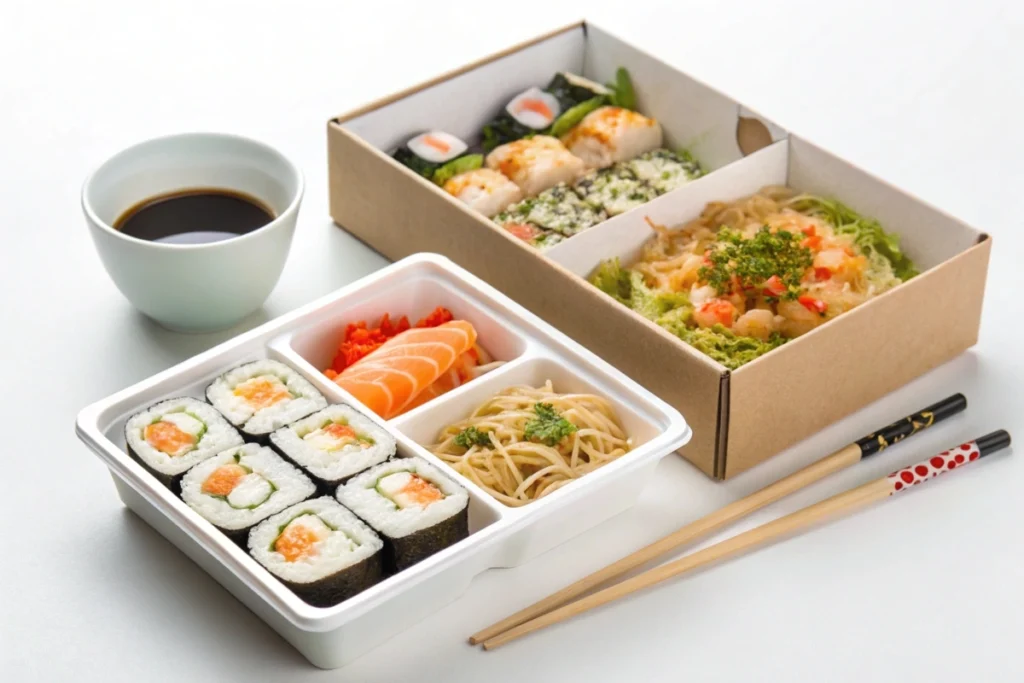
History and Context of Japanese Food
The history of Japanese cuisine is deeply connected to the country’s geography and cultural development over centuries. Influenced by China and Korea in its early stages, Japan gradually evolved its own distinctive practices. Early diets primarily consisted of rice—introduced during the Yayoi period (300 BCE–300 CE)—alongside fish and vegetables, because of the nation’s location surrounded by bountiful seas. As Buddhism grew in influence, vegetarian-friendly dishes gained prominence.
The Kamakura period (1185–1333) shaped many of the customs we associate with Japanese cuisine today, including an emphasis on fresh, seasonal ingredients and a minimalist approach to preparation. Food became not just a matter of sustenance but also an integral part of societal rituals. For example, tea ceremonies (chanoyu) came into practice, focusing on the aesthetic and spiritual harmony in serving and consuming tea with sweets.
During the Edo period (1603–1868), Japan saw significant urban growth, and many modern forms of popular dishes emerged. Sushi, for instance, began as a street food, using fermented rice to preserve fish. Over time, fermentation evolved into quick pickling, making sushi a convenient and flavorful snack in bustling cities like Edo (modern-day Tokyo). Tempura was actually introduced by Portuguese missionaries but eventually integrated seamlessly into Japanese cuisine, often made with seafood or vegetables.
After Japan opened its borders in the mid-19th century, Western influences expanded the national palate. Dishes like tonkatsu (breaded pork cutlets) came from European inspirations but were adapted to Japanese tastes. This historical layering of domestic and foreign elements has made Japanese cuisine both diverse and refined.
Today, as you search for the best japanese food near me open now, you’re part of a dynamic culinary tradition that balances respect for heritage with an openness to innovation. Understanding this backdrop can greatly enhance your appreciation for every bowl of ramen or slice of sashimi you enjoy. When you dig into your local Japanese spot’s menu, you’re not just tasting a dish; you’re experiencing centuries of evolution rooted in artistry, technique, and reverence for nature.
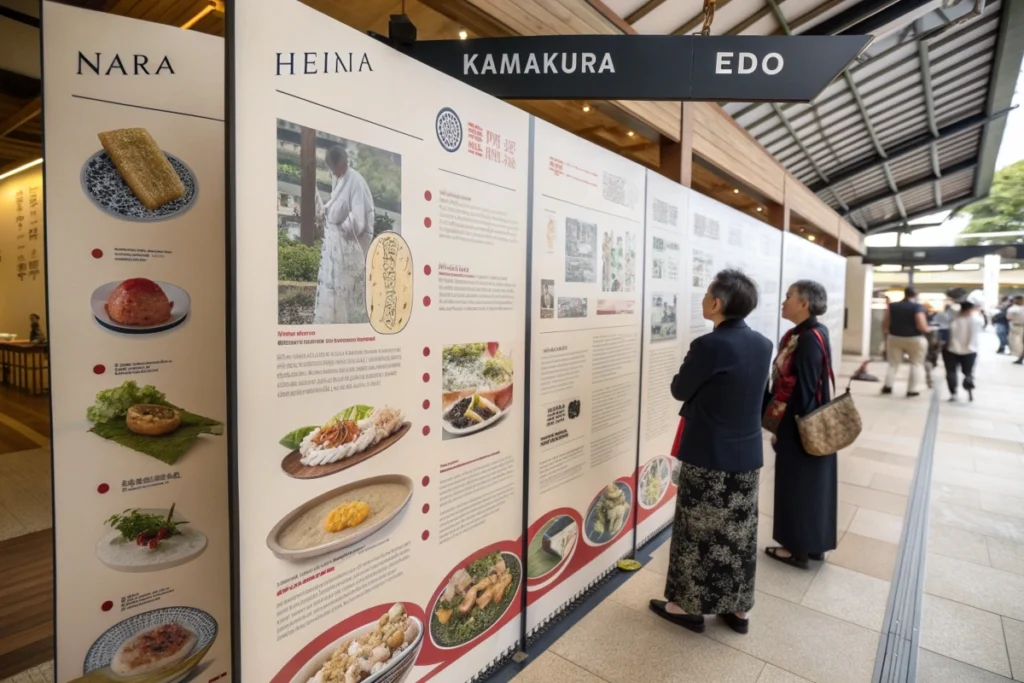
Practical Examples and Use Cases
Scenario 1: A Quick Lunch
You’re on a short lunch break and need japanese food near me open now. Look for a fast-casual eatery that offers bento boxes. Bento typically includes a protein (like salmon or chicken teriyaki), rice, and side dishes (such as pickled veggies). It’s a balanced meal that can be enjoyed on-the-go. Many establishments also offer quick grab-and-go sushi packs—perfect if you want something light but flavorful.
Scenario 2: Special Occasion Dining
When celebrating a birthday or anniversary, you might want something more upscale. Seek out an omakase sushi bar or a restaurant that offers a multi-course kaiseki experience. This dining style showcases high-quality ingredients, from seasonal sashimi to delicate desserts. Booking in advance is often necessary, especially on weekends.
Scenario 3: Family Gathering at Home
If you have kids or family members who prefer to eat at home, japanese food near me delivery is ideal. Order a variety of dishes, such as tempura, sushi rolls, and a large bowl of udon or soba noodles. This allows each person to sample different items. Plus, having everything delivered in separate containers makes it easy to share.
Scenario 4: Healthy Eating
Japanese cuisine can be incredibly health-conscious. Grilled fish, miso soup, and seaweed salads are not only delicious but also packed with nutrients. If you’re monitoring your diet, ask the restaurant to reduce the sodium in their soups and sauces. Many places will accommodate requests for fewer oils or lighter seasoning.
These real-life examples showcase how Japanese cuisine can seamlessly fit various lifestyles, occasions, and personal preferences. Keep them in mind next time you search for japanese food near me to match your schedule and mood.
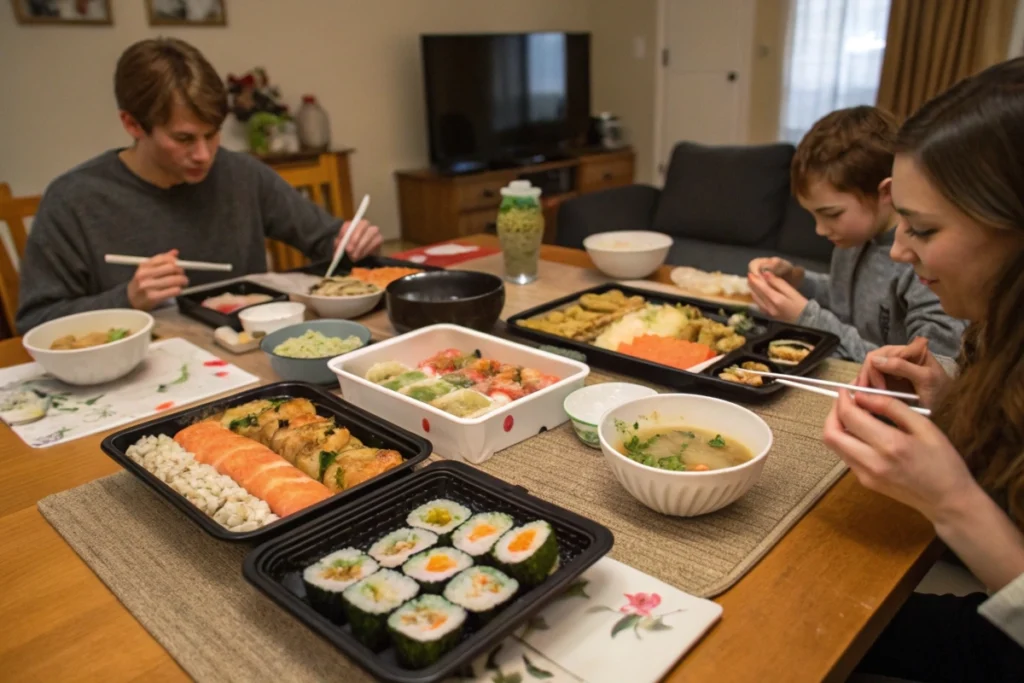
FAQs
In this section, we address common questions that arise when you’re searching for japanese food near me or exploring the cuisine for the first time.
- Where can I find japanese food near me open now?
Use apps like Yelp or Google Maps. Filter by “Open Now” or “Open Late” to get instant results. You’ll see ratings, distance, and often photos of the menu items. - What’s the best japanese food near me for beginners?
Look for places offering introductory dishes like California rolls, chicken teriyaki, or tempura. These items are generally mild in flavor, making them perfect for those new to Japanese cuisine. - How do I ensure I’m getting authentic japanese food near me?
Check if the restaurant uses fresh ingredients, including real wasabi instead of horseradish paste. Look for menus that emphasize seasonal items and chefs with Japanese culinary training. Reviews from native Japanese diners can also be a good indicator. - Do Japanese restaurants cater to vegetarian or vegan diets?
Yes! Many offer vegetable tempura, tofu dishes, and noodle soups with vegetable-based broths. Just confirm there’s no fish sauce or bonito flakes in the soup stock if you’re strictly vegetarian or vegan. - Can I find japanese food near me menu options for kids?
Absolutely. Many restaurants have kid-friendly options like simple sushi rolls (cucumber or avocado), chicken katsu, and mild udon soups. Bento boxes are also a fun way for kids to sample multiple items in one meal. - Is sushi safe to eat from a takeout or delivery service?
Yes, if the restaurant follows proper food handling and packaging procedures. Look for high ratings, and ensure that cold items are kept separate from warm dishes during transit. - What if I want to order sushi near me specifically?
Filter your search on delivery apps to “Sushi.” Check the menu for variety—some places offer specialty rolls that might catch your eye. Reading user reviews about freshness and taste can help you make an informed choice.
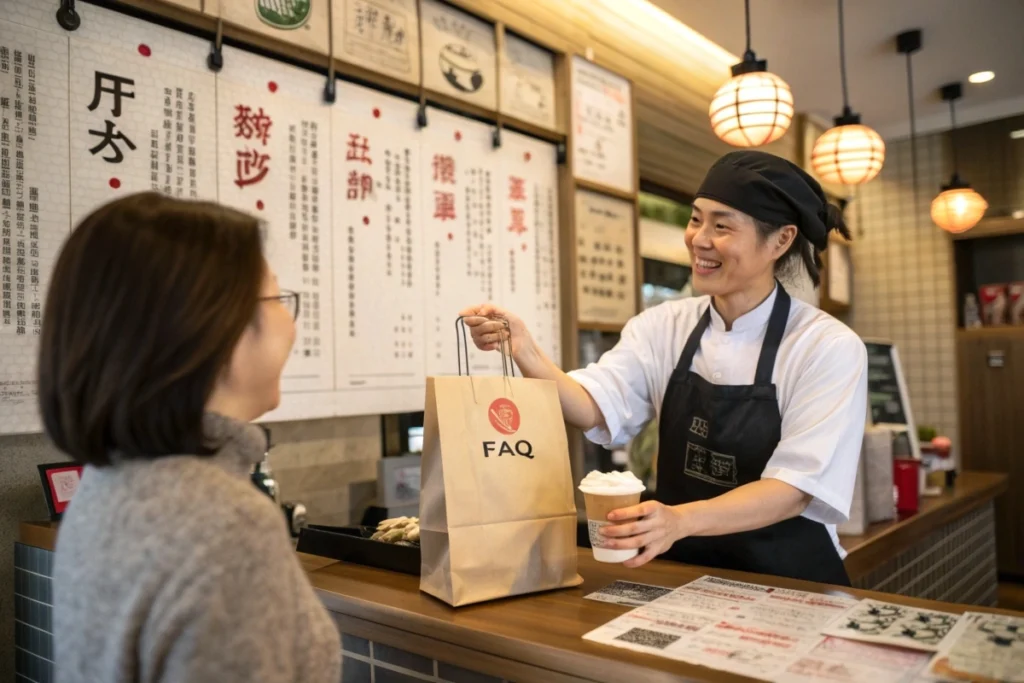
Conclusion
Japanese cuisine brings a harmony of flavors, technique, and tradition right to your local neighborhood. Whether you’re in the mood for an upscale omakase experience or simply want to enjoy a cozy takeout night at home, there’s japanese food near me to suit every taste and occasion. Remember to explore menus that highlight fresh, seasonal ingredients, and don’t be afraid to venture beyond your go-to sushi rolls. Ramen, tempura, katsu, and countless other specialties await your discovery.
As you continue your culinary journey, always keep an eye out for quality indicators—like real wasabi, well-trained chefs, and glowing reviews from fellow foodies. With tools like delivery apps and social media platforms, finding japanese food near me delivery or checking if a particular spot is open now has never been simpler. We encourage you to try different places, talk to the staff about their signature dishes, and even learn some basic Japanese food terms to enhance your dining adventures.
Thank you for joining us on this deep dive into Japanese cuisine. Now that you’re equipped with tips on authenticity, top dishes, and local search methods, it’s time to indulge in the flavors of Japan.
For an even more gourmet experience, learn how to prepare Japanese steak at home.
